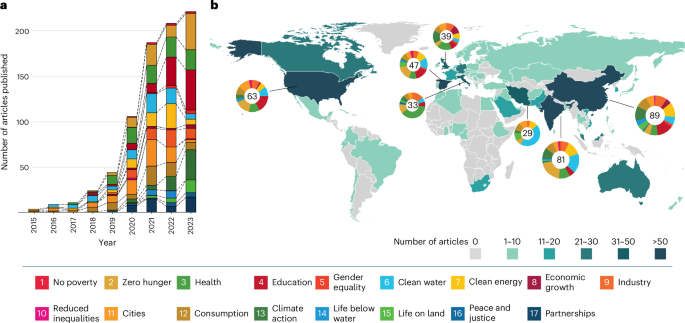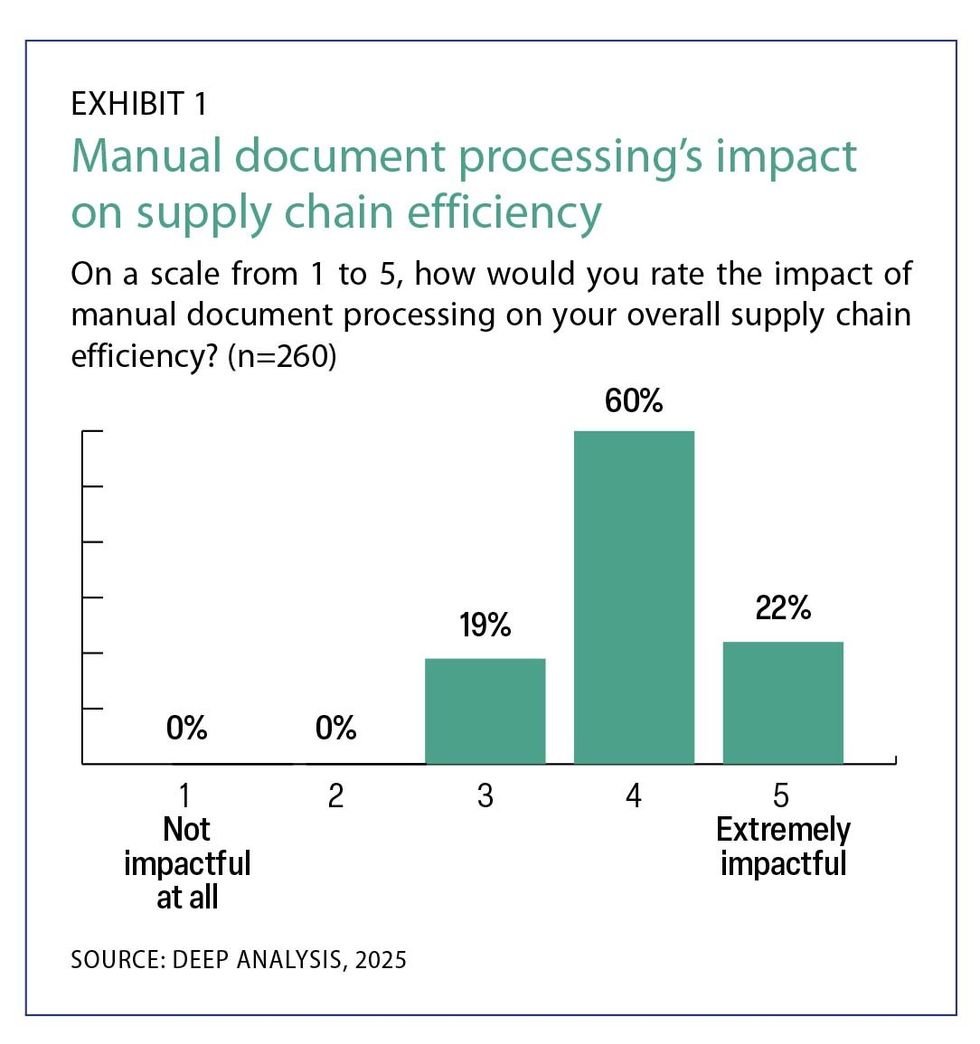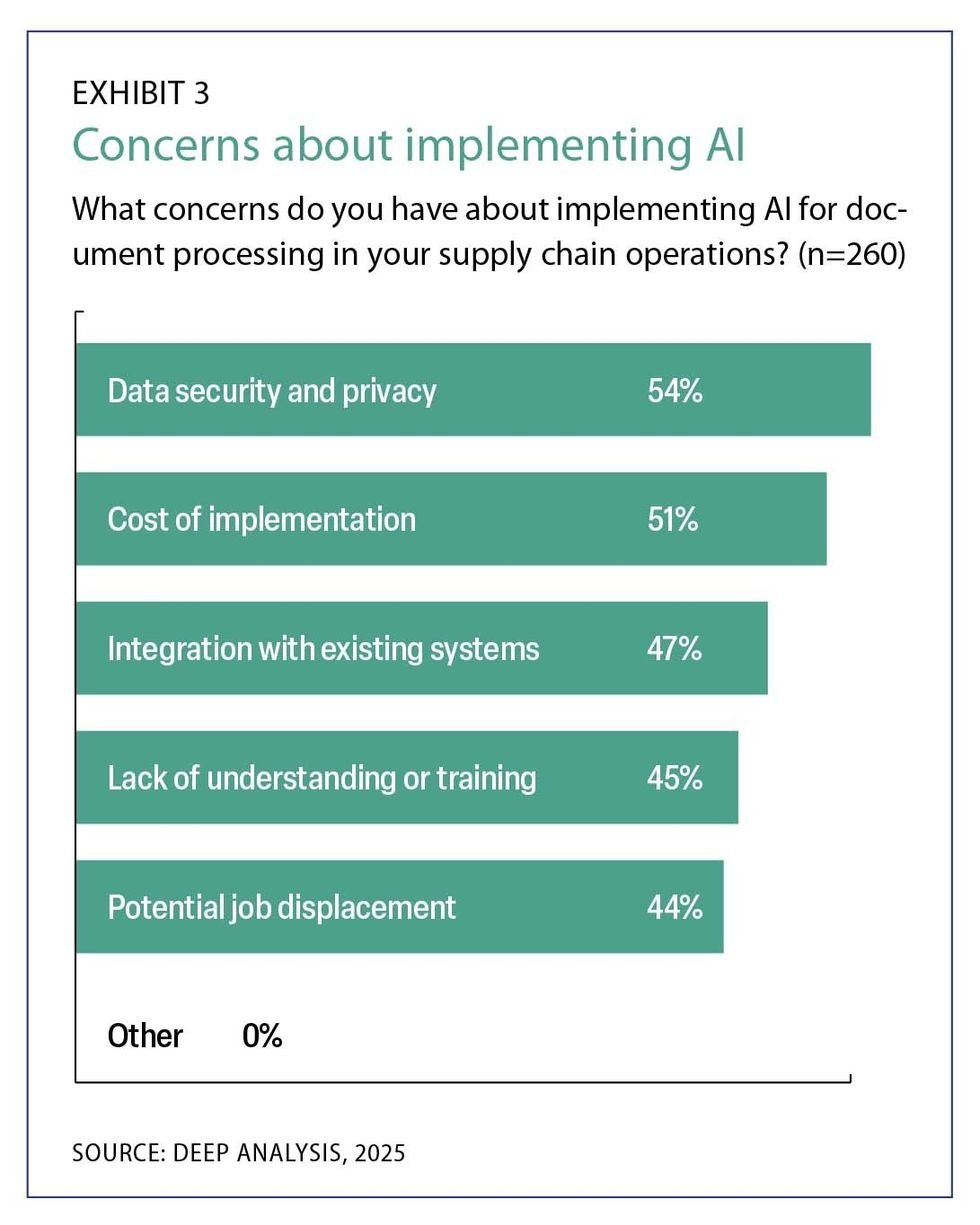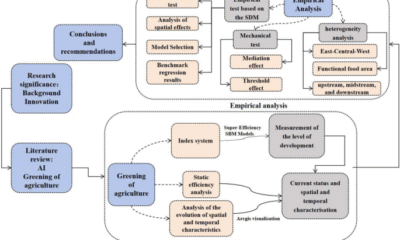AI Insights
Artificial intelligence in sustainable development research

Despite the growing body of literature on AI and its applications to the SDGs, studies that deeply integrate AI methods with SDG-related research remain surprisingly sparse. Most research focuses either on the technical aspects of AI or on addressing specific SDGs. The intersection where AI tools are applied to solve complex sustainability challenges or contribute to SDG attainment has hardly been realized to date.
Focus on local studies and gaps in social sustainability
There has been a substantial increase in the number of annual publications on sustainable development research using AI, particularly since 2019. This surge is consistent with broader trends in sustainability and AI research, as evidenced by some 600,000 articles published on sustainability (article includes ‘sustainab*’) and 400,000 articles published on ‘artificial intelligence’ in the first 10 months of 2024 alone (Scopus query 3 November 2024). A literature review covering the period 1990 to 2014 first documented the rapid rise of AI-related research, driven in part by third-party funding and increasing global interest20. This trend underscores the high relevance of both sustainability and AI as research domains.
While AI research output is positively correlated with third-party funding availability in earlier research20, this pattern was only partly confirmed in our study. For example, the prominence of AI-based watershed modelling in Spain, India and Iran reflects well-established research traditions21,22. In Spain, highly cited publications on AI by Spanish scholars have been documented since the 1990s20. Similarly, Italy’s notable focus on AI-based research on SDG 3 (good health) is related to several (national) initiatives that encourage data sharing and collaboration23,24. China’s AI strategy, embedded in its New Generation of Artificial Intelligence Development Plan until 2030, prioritizes economic development via megaprojects25. However, our review finds that most Chinese publications focus on climate change, clean energy and education, which clearly suggests a deviation from purely economic goals.
Despite this progress, the United Nations‘ 2023 and 2024 Sustainable Development Goals Reports highlight the lack of progress on Agenda 2030, with half of SDG targets off-track and insufficient data for most goals in 202326,27. The United Nations has advocated that AI support the SDGs26, but gaps remain. For example, AI is widely used in health, education and environmental modelling, but its use in poverty reduction (SDG 1) is minimal. We found only seven reviews and no empirical studies in the most cited literature applying AI to SDG 1 (no poverty). This finding is striking given that 575 million are projected to live in extreme poverty in 203026. Research on poverty relies predominantly on qualitative approaches or analyses of demographic data, for example, ref. 28, with few examples of AI-driven approaches for poverty prediction tools29.
The proliferation of machine-learning, deep-learning and evolutionary algorithms over the past decade has had a profound impact on environmental sustainability research. These methods excel at processing large-scale, sensor-based and image-rich datasets, making them particularly effective for tasks such as vegetation monitoring, water resource management and clean energy optimization. For example, they are used to track vegetation changes through satellite imagery, predict water levels and optimize renewable energy grid performance30. Evolutionary algorithms in particular have proved useful in complex optimization problems, such as wind farm layouts and solar panel configurations, while balancing environmental and economic objectives31.
In contrast to its environmental applications, AI remains underutilized in areas of social sustainability, such as policymaking, education for sustainable development and social equity, which are critical to the SDGs. This disparity, apart from the historical overrepresentation of some research fields32, is due to several challenges:
-
(1)
Complexity of social data: social systems involve qualitative and contextual variables that are difficult to model qualitatively.
-
(2)
Ethical constraints: privacy laws and ethical concerns limit access to human behavioural data.
-
(3)
Supervised learning limitations: many AI methods require large, labelled datasets that are sparse and context-dependent in political and social domains33.
These limitations contribute to notable gaps in AI applications for critical dimensions of sustainable development, such as SDG 10 (reduced inequalities) and SDG 16 (peace, justice, and strong institutions). Addressing these gaps requires more inclusive data frameworks that account for qualitative and context-rich variables, greater interdisciplinary collaboration to integrate AI with social sciences, and algorithmic innovations tailored to the complexity of social systems5. Our analysis reveals a gradual increase in the body of literature on AI in sustainable development research. However, many AI users tend to adopt techno-optimistic or ecomodernist perspectives, or align with other viewpoints that position technology as a great leap towards solutions. Correspondingly, working on social sustainability solutions with AI may require a deeper mindset shift3.
Disciplinary AI techniques by few research communities
The regional scope of most of the empirical articles in this study reflects the thematic focus and methodological nature of the research. For example, many studies deal with regional watershed assessments, for example, refs. 34,35. Other region-specific applications range from evaluating AI tools in education, such as single learning platforms, for example, ref. 36, to optimizing energy consumption in greenhouses37. By contrast, the few global empirical studies that we found primarily address system optimization, data mining and remote sensing, for example, refs. 38,39. However, the limited number of global studies may be due to the complexity and the high computational demands of AI methods, which remain a substantial barrier to large-scale applications40.
Although sustainable development inherently requires transformative, longitudinal research (Fig. 2), most empirical studies focus on the present and use quantitative approaches. This is consistent with previous observations in health-care research, where AI-powered studies rarely address temporal dynamics41. Furthermore, SDG terminology often functions as a rhetorical device rather than as the basis for actionable insights or transformative change42. Our findings suggest that the connection between AI methods and sustainable development research remains nascent, characterized by experimental applications and buzzword use rather than substantive contributions to sustainability goals.
The current research landscape is highly fragmented, with a clear disciplinary bias towards forecasting and optimization in technical areas such as water resource management, vegetation monitoring, energy systems and pollution control. This reflects the ongoing experimental phase of AI development, as researchers continue to explore its potential to advance the SDGs5. However, emerging breakthroughs in natural-language processing applications such as ChatGPT and other generative AI technologies are expected to shift research priorities. In the coming years, AI applications are likely to expand into the social sciences, psychology and education, enabling more nuanced investigations of societal changes43,44.
Disciplinary focus within the SDG perspectives
The disciplinary divide in sustainable development research, as illustrated in Fig. 2, is a well-documented phenomenon. While a growing body of transdisciplinary literature challenges this divide, particularly in the context of AI45, two distinct patterns emerge in our analysis. First, there is a clear distinction between studies that focus on the application of AI and those that use AI as a methodological approach to advance knowledge on sustainable development. For example, prediction is a common technique in both smart agriculture and clean energy research, but the former emphasizes remote sensing for image detection, while the latter focuses on grid and physical systems optimization46,47.
Most SDGs are directly represented in the groups that we find, including SDG 3 (health), SDG 4 (education), SDG 6 (water), SDG 7 (clean energy) and SDG 15 (life on land). Despite the extensive use of AI for many years in these areas, the conceptualization of sustainability in these studies remains weak (Supplementary Fig. 4). This narrow framing reflects the disciplinary silos from which causal reasoning is derived, often at odds with the solution-oriented, systems-level agenda in sustainability science48.
Achieving SDG 17 (partnership for the goals) will require inter- and transdisciplinary research pathways across all SDGs, potentially catalysed by the diverse applications of AI explored in this study. Examples include AI’s role in fostering collaboration, supporting data integration, and bridging disciplinary boundaries to address complex sustainability challenges.
However, notable gaps remain. AI-based research on poverty (SDG 1) and gender (SDG 5) is underrepresented (Supplementary Fig. 1). For poverty, we found only seven review articles, while for gender there were eight articles (five empirical and three conceptual or review). Despite its foundational importance27, poverty is often framed in terms of economic welfare49 or as an implicit component of broader sustainable progress metrics such as GDP or inclusive welfare50. In particular, smart agriculture is presented as a ‘pathway out of poverty’ in rural contexts51.
Gender (SDG 5) research has focused primarily on bias in research itself, such as, for example, in a study on gender representation in Canadian AI research52. In health care, AI algorithms often do not account for sex and gender bias53, limiting their equity and effectiveness. Addressing such disparities is critical to advancing social equity and inclusivity in AI applications across sustainable development domains. Certain SDGs, such as those related to industry and consumption, have long been closely associated with AI and data-driven analytics, even before the formal introduction of the SDGs. As a result, these SDGs are covered by a more extensive body of scientific literature. By contrast, other SDGs, such as poverty and gender equality, do not have a similarly well-established tradition of AI-driven quantitative data analysis. While relevant data sources exist for areas such as gender research, addressing this research gap remains a future challenge for the communities working on these specific SDGs.
Limitations of our study
Our analysis has several limitations, which stem from the scope and methodology of our review. First, our selection of articles was constrained by search terms that aimed at the intersection between AI and the SDGs. Since the SDGs represent a political framework and a policy compromise, many articles that explore the broader intersection between sustainability and AI may not have been included in our dataset. Second, our focus on the most cited articles introduces a potential bias towards well-established research, which may miss emerging studies with lower citation counts (Supplementary Information I and Supplementary Tables 4 and 5). Third, both the SDG as well as the AI communities often publish findings through policy reports or conference proceedings, which creates delays associated with the duration of the peer review process. This leads to a lag in the visibility of emerging patterns in the journal-based literature. Despite these limitations to our analysis, we believe that the patterns identified in our review are robust and unlikely to change significantly with the inclusion of more previously published literature or grey literature. However, future developments in the field may naturally refine or extend the findings presented here.
Our work provides a solid foundation to enable a more substantiated discussion about the current state of the art of the intersection between AI-focused and SDG-focused scientific literature. We present the patterns in the literature published to date to contribute to a change in the future literature. We highlight gaps and a lack of deeper ties between the two emerging research fields. The main aim of our review is thus to present an overview of the current literature, ideally to stimulate the discussion on AI and sustainability and to highlight where new lines of thinking need to emerge. It is clearly beyond this review to provide a more in-depth discussion on future trajectories. However, we hope to contribute by engaging in a critical debate on a larger integration.
Limitations of the current literature and outlook
The literature reviewed broadly reflects the three pillars of sustainability: social, environmental and economic54. However, notable gaps remain in the application of AI to specific SDGs. Specifically, SDG 1 (no poverty), SDG 5 (gender equality) and SDG 17 (partnership for the goals) remain severely underrepresented. These goals are foundational to the SDG framework, highlighting the interdependence between economic progress and societal well-being55. Their relative neglect in AI and sustainability research exacerbates climate injustice and undermines the capacity for long-term and inclusive collaboration across disciplines and between science and society.
The uneven distribution of articles across SDGs is partly due to the different definitions and applications of AI in the current literature. Many studies adopt a broad or undefined understanding of sustainability, often using the term without providing a clear definition. This lack of conceptual clarity reflects a broader problem: most studies are limited to systems knowledge, failing to address the normative or transformative dimensions that are central to sustainability science. Ethical considerations related to AI are clearly important for both research and policy, but they are almost entirely absent from the research reviewed. Beyond this review, they remain highly fragmented and insufficiently integrated. Prominent ethical debates typically revolve around the optimization of energy use, so-called ‘Green AI’, the growing energy demand due to AI, the efficiency of production and consumption processes, and the accessibility and confidentiality of training and test data56,57,58. However, there are deeper and often more tacit debates about national AI systems, their use, and the competitive dynamics between countries. Moreover, broader concerns about the potential risks of AI—such as its ability to control and disempower citizens, or even pose existential threats to humanity—are also central to these debates59,60,61. Although the data sources examined in this review underscore the importance of these issues, a comprehensive and substantial body of literature addressing them remains largely absent from the available literature. This omission contrasts sharply with the normative and values-driven nature of sustainability, which seeks to address profound societal challenges through inclusive and ethical solutions.
In addition, AI itself poses potential risks to sustainability, such as its high energy consumption and other environmental impacts, which can exacerbate challenges such as climate change. This highlights the responsibility of researchers to ensure that AI applications are consistent with sustainability principles and make a positive contribution to our common future.
While research on the intersection between AI and sustainability has grown exponentially in recent years, many SDGs remain underexplored. Current research often represents an innovative but opportunistic starting point, with limited integration across disciplines or transformative contributions to sustainability goals. To address these gaps, a more integrated research agenda is needed—one that emphasizes interdisciplinary collaboration, ethical considerations and the normative aspects of sustainability. Such an agenda has the potential to advance the role of AI as a transformative tool for achieving sustainable development in the years to come.
AI Insights
Up 300%, This Artificial Intelligence (AI) Upstart Has Room to Soar

Get to know an artificial intelligence stock that other investors are just catching on to.
One stock that is not on the radar of most mainstream investors has quietly risen by more than 300% since April 2025, moving from an intraday low of $6.27 per share all the way to an intraday high of $26.43 per share in late August. Previously, the stock had peaked at over $50 per share in 2024. What changed? It became an artificial intelligence (AI) stock after suffering in the downturn of the electric vehicle market. Most investors probably haven’t caught on yet, and, until recently, the company may not have recognized the AI opportunity it had, either.
I’m referring to Aehr Test Systems (AEHR -2.81%), and I’ll explain why this company is crucial to the AI and data center industries. There is still a significant opportunity for investors to capitalize on, even if they missed the bottom.
Why is Aehr critical to AI?
Here is the 30,000-foot view. When companies, notably hyperscalers, build massive data centers full of tens of millions, and sometimes hundreds of millions, of semiconductors (chips), they must ensure that they are reliable. High failure rates are extremely costly in terms of remediation, labor, downtime, and replacements. If the company selling the chips has a high failure rate, its competitors can gain traction. Aehr Test Systems provides the necessary reliability testing systems.
Their importance cannot be understated. The latest chips are stackable (multiple layers of chips forming one unit), which allows for exponentially more processing power. However, there is a catch. Many times, they are a “single point of failure.” In other words, if one chip in the stack fails, the entire stack fails. The importance of reliability testing has increased by an order of magnitude as a result. And now Aehr is the hot name that could become a stock market darling again.
Image source: Getty Images.
Is Aehr stock a buy now?
You have probably heard about the massive data centers that the “hyperscalers,” companies like Meta Platforms, Amazon, Elon Musk’s xAI, and other tech giants, are building across the country and the world. In fact, trying to keep up with all of the announcements of new projects would make your head spin. In many cases, the data center campus spans more than a square mile and contains hundreds of thousands of chips. Elon Musk’s xAI project, dubbed “Colossus,” is said to require over a million GPUs in the end.
As shown below, the number of hyperscale data centers is soaring with no end in sight.
Source: Statista.
This number increased to more than 1,100 at the end of 2024, nearly doubling over the past five years. The demand is primarily driven by artificial intelligence, which is why Aehr is now an “AI stock” — and the reason its share price took off and could continue higher over the long term.
Aehr still faces serious challenges. Its revenue fell from $66 million in fiscal 2024 to $59 million in fiscal 2025. It slipped from an operating profit of $10 million to a loss of $6 million over that period as the company undertook the challenging task of refocusing its business. However, investors who dig deeper see a very encouraging sign. The company’s backlog (orders that have been placed, but not yet fulfilled) jumped to $15 million from $7 million. Aehr also announced several orders received from major hyperscalers over the last couple of months.
It’s challenging to value Aehr stock at this time. The company is in a transition period, and while the AI market looks hugely promising, it is still a work in progress. In its heyday, the stock’s valuation peaked at 31 times sales, and as recently as August 2023 it traded for 24 times sales compared to 12 times sales today. The AI market could be a gold mine for Aehr, and Aehr stock looks like a terrific buy for investors.
Bradley Guichard has positions in Aehr Test Systems and Amazon. The Motley Fool has positions in and recommends Amazon and Meta Platforms. The Motley Fool has a disclosure policy.
AI Insights
Augment AI startup secures $85M for logistics teammate

Given these persistent challenges, could artificial intelligence (AI) be the answer? By automating repetitive tasks—such as invoice validation, exception alerts, and document processing—AI has the potential to streamline workflows, reduce errors, and free up teams to focus on strategic decision-making.
A recent report by research firm Deep Analysis, sponsored by document automation specialist Hyperscience, sheds light on the current state of AI readiness in T&L back-office functions. Titled “Market Momentum Index: AI Readiness in Transportation and Logistics Back-Office Operations,” the report drew on findings from a survey of T&L professionals to reveal both the challenges and opportunities for automation and AI adoption. (For more information about the research and methodology, see sidebar, “About the research.”)
This article summarizes some of the key findings and offers some actionable recommendations for supply chain professionals looking to harness the power of AI to drive efficiency and competitiveness.
THE CRITICAL ROLE OF THE BACK OFFICE
Back-office operations are the administrative core of supply chain processes, encompassing tasks such as order processing, inventory management, billing, compliance documentation, and communications with vendors and carriers. While these tasks are not visible to end consumers, they are vital to maintaining the smooth flow of goods and ensuring on-time deliveries. Furthermore, these operations are typically complex, involving numerous transactions and partners, and, as a result, are often plagued by fragmented processes, duplicated efforts, and misaligned data. Yet, most transportation and logistics companies still depend on manual processes and paper-based systems for their back-office operations, which often lead to errors, delays, and inefficiencies.
For example, the industry relies heavily on documents such as invoices, bills of lading, shipment tracking forms, and compliance records. Many organizations, however, use manual or semi-automated processes to manage these documents. Survey respondents indicated that the manual handling of supply chain documentation is a significant challenge that can have a large impact on overall supply chain efficiency (see Exhibit 1). For instance, missing or incorrect paperwork can cause customs delays, incur fines, or disrupt critical supply chain timelines. Additionally, document handling involves multiple touchpoints, which increases the risk of errors and operational delays. Furthermore, the lack of standardized document formats complicates data sharing and collaboration.
The survey found that many companies have implemented digital tools such as enterprise resource planning (ERP) systems, supply chain management (SCM) systems, transportation management systems (TMS), and warehouse management systems (WMS). These systems were initially marketed as comprehensive solutions capable of automating business processes, improving efficiency, and providing real-time data visibility. However, their effectiveness has been limited by several key challenges. First, high implementation costs and complex integrations often lead to partial deployments, where critical functions remain unautomated. Second, rigid system architectures struggle to adapt to dynamic business needs, forcing employees to rely on manual workarounds—particularly in Excel—to fill functionality gaps. This reliance on spreadsheets introduces high data-entry error rates, inconsistent reporting, and limited data visualization capabilities. Additionally, ineffective user training and resistance to change further hinder adoption, leaving many organizations unable to fully leverage these systems. As a result, despite their potential, ERP, WMS, and similar tools frequently fall short of delivering the promised operational transformation.
THE GROWING INTEREST IN AI
Given the lack of success with other technology tools, there is a perception that supply chain organizations in general—and T&L firms in particular—might be resistant to or uninterested in AI. So it came as a bit of a surprise that the survey results indicated a growing interest in automation and AI within the T&L sector. Over 70% of respondents expressed a willingness to invest in AI-optimized systems, recognizing the potential for these technologies to transform back-office operations.
Of those respondents whose organizations were already using AI, 98% said they view the technology as useful, important, or vital. As Exhibit 2 shows, these respondents are currently employing AI to accomplish a wide range of goals. The report highlights several key areas where AI adds value, such as:
1. Improved decision-making (31%): AI can analyze large volumes of complex data—such as real-time traffic patterns, weather conditions, shipment tracking, and historical trends—to optimize supply chain decisions.
2. Error reduction (28%): For back-office tasks such as data entry, invoice processing, and document management, AI can automate repetitive processes, drastically reducing human error.
3. Enhanced data quality (37%): AI improves data quality by ensuring consistency, standardization, and accuracy, making the data more reliable for decision-making purposes.
Going forward, automation and AI have the potential to reshape the industry, enabling companies to reimagine workflows, prioritize sustainability, and enhance collaboration.

BARRIERS TO AI ADOPTION
Despite the clear potential of AI, significant barriers to adoption remain. The survey respondents reported several concerns about implementing AI for back-office processes (see Exhibit 3). The most common concerns include:
1. Data security and privacy (54%): Transportation and logistics companies handle a large volume of sensitive data, including customer information, shipment details, and payment records. Ensuring robust security protocols and compliance with privacy regulations is critical for any AI implementation.
2. Cost of implementation (51%): AI technologies require considerable upfront investment in both hardware and software, and many smaller logistics firms or those with tight margins may find it difficult to justify this expense.
3. Integration with existing systems (47%): Many logistics companies still rely on traditional TMS and ERP systems that were not built with AI in mind, requiring substantial and extensive investment in infrastructure upgrades.

ESSENTIAL STEPS
No matter how powerful a technology is, its effectiveness in the real world of business is only as good as the planning and execution of a transformation project. As companies look to implement AI, they must make sure to take essential steps such as standardizing data formats, investing in workforce training, and fostering industrywide collaboration. The report concludes with several recommendations for companies looking to adopt AI and automation in their back-office operations, including:
1. Invest in AI training: Providing employees with training on AI tools and systems will help bridge the knowledge gap and increase adoption rates.
2. Focus on incremental implementation: Starting with pilot projects allows companies to assess the technology’s return on investment (ROI) and build confidence in AI technologies before large-scale deployment.
3. Develop industry standards: Collaborate with industry groups to establish standardized document formats and processing protocols, reducing inefficiencies and errors.
4. Prioritize integration: Select AI solutions that integrate seamlessly with existing systems, minimizing disruption during the transition.
5. Monitor emerging technologies: Stay informed about advancements in AI, such as intelligent document processing (IDP) and robotic process automation (RPA), to remain competitive.
THE TIME IS NOW
The transportation and logistics sector is at a pivotal moment, with significant opportunities to leverage AI and automation to address long-standing inefficiencies in back-office operations. While challenges such as integration, cost, and training remain, the industry is moving steadily toward broader adoption of digital and AI-based solutions. By addressing these barriers and focusing on incremental, strategic implementation, companies can unlock the full potential of automation and AI, driving efficiency and competitiveness in an increasingly complex and indeed volatile market.
Some may be understandably skeptical of AI’s ability to truly transform back-office operations, particularly given past failures to digitize paper-based processes. Certainly, no technology is perfect, and its effectiveness is dependent on how well the organization plans and executes its implementation. However, it’s important to note that huge advances have been made in the ability of AI to read, understand, and process document-based processes. As a result, AI has the potential to make relatively light work of anything from invoices to bills of lading, providing accuracy levels typically far higher than were a human to do the work manually.
For supply chain professionals, the message is clear: The future of T&L lies in embracing digital transformation, investing in AI, and fostering collaboration across the industry. The time to act is now.
About the research
In 2024, the document automation company Hyperscience and the Council of Supply Chain Management Professionals (CSCMP) partnered with the research and advisory firm Deep Analysis on a research project exploring the current state of back-office processes in transportation and logistics, and the potential impact of AI. The report, “Market Momentum Index: AI Readiness in Transportation and Logistics Back-Office Operations,” is based on survey results from senior-level managers and executives from 300 enterprises located in the United States. All of these organizations have annual revenues greater than $10 million and more than 1,000 employees. The survey was conducted in November and December of 2024. The full 21-page report can be downloaded for free at https://explore.hyperscience.ai/report-ai-readiness-in-transportation-logistics.
AI Insights
Anthropic to pay authors $1.5 billion in settlement over chatbot training material : NPR

Thriller novelist Andrea Bartz is photographed in her home Thursday in the Brooklyn borough of New York City.
Richard Drew/AP
hide caption
toggle caption
Richard Drew/AP
NEW YORK — Artificial intelligence company Anthropic has agreed to pay $1.5 billion to settle a class-action lawsuit by book authors who say the company took pirated copies of their works to train its chatbot.
The landmark settlement, if approved by a judge as soon as Monday, could mark a turning point in legal battles between AI companies and the writers, visual artists and other creative professionals who accuse them of copyright infringement.
The company has agreed to pay authors about $3,000 for each of an estimated 500,000 books covered by the settlement.
“As best as we can tell, it’s the largest copyright recovery ever,” said Justin Nelson, a lawyer for the authors. “It is the first of its kind in the AI era.”
A trio of authors — thriller novelist Andrea Bartz and nonfiction writers Charles Graeber and Kirk Wallace Johnson — sued last year and now represent a broader group of writers and publishers whose books Anthropic downloaded to train its chatbot Claude.
The Anthropic website and mobile phone app are shown in this photo in New York on July 5, 2024.
Richard Drew/AP
hide caption
toggle caption
Richard Drew/AP
A federal judge dealt the case a mixed ruling in June, finding that training AI chatbots on copyrighted books wasn’t illegal but that Anthropic wrongfully acquired millions of books through pirate websites.
If Anthropic had not settled, experts say losing the case after a scheduled December trial could have cost the San Francisco-based company even more money.
“We were looking at a strong possibility of multiple billions of dollars, enough to potentially cripple or even put Anthropic out of business,” said William Long, a legal analyst for Wolters Kluwer.
U.S. District Judge William Alsup of San Francisco has scheduled a Monday hearing to review the settlement terms.
Anthropic said in a statement Friday that the settlement, if approved, “will resolve the plaintiffs’ remaining legacy claims.”
“We remain committed to developing safe AI systems that help people and organizations extend their capabilities, advance scientific discovery, and solve complex problems,” said Aparna Sridhar, the company’s deputy general counsel.
As part of the settlement, the company has also agreed to destroy the original book files it downloaded.
Books are known to be important sources of data — in essence, billions of words carefully strung together — that are needed to build the AI large language models behind chatbots like Anthropic’s Claude and its chief rival, OpenAI’s ChatGPT.
Alsup’s June ruling found that Anthropic had downloaded more than 7 million digitized books that it “knew had been pirated.” It started with nearly 200,000 from an online library called Books3, assembled by AI researchers outside of OpenAI to match the vast collections on which ChatGPT was trained.
Debut thriller novel The Lost Night by Bartz, a lead plaintiff in the case, was among those found in the Books3 dataset.
Anthropic later took at least 5 million copies from the pirate website Library Genesis, or LibGen, and at least 2 million copies from the Pirate Library Mirror, Alsup wrote.
The Authors Guild told its thousands of members last month that it expected “damages will be minimally $750 per work and could be much higher” if Anthropic was found at trial to have willfully infringed their copyrights. The settlement’s higher award — approximately $3,000 per work — likely reflects a smaller pool of affected books, after taking out duplicates and those without copyright.
On Friday, Mary Rasenberger, CEO of the Authors Guild, called the settlement “an excellent result for authors, publishers, and rightsholders generally, sending a strong message to the AI industry that there are serious consequences when they pirate authors’ works to train their AI, robbing those least able to afford it.”
The Danish Rights Alliance, which successfully fought to take down one of those shadow libraries, said Friday that the settlement would be of little help to European writers and publishers whose works aren’t registered with the U.S. Copyright Office.
“On the one hand, it’s comforting to see that compiling AI training datasets by downloading millions of books from known illegal file-sharing sites comes at a price,” said Thomas Heldrup, the group’s head of content protection and enforcement.
On the other hand, Heldrup said it fits a tech industry playbook to grow a business first and later pay a relatively small fine, compared to the size of the business, for breaking the rules.
“It is my understanding that these companies see a settlement like the Anthropic one as a price of conducting business in a fiercely competitive space,” Heldrup said.
The privately held Anthropic, founded by ex-OpenAI leaders in 2021, said Tuesday that it had raised another $13 billion in investments, putting its value at $183 billion.
Anthropic also said it expects to make $5 billion in sales this year, but, like OpenAI and many other AI startups, it has never reported making a profit, relying instead on investors to back the high costs of developing AI technology for the expectation of future payoffs.
-

 Business1 week ago
Business1 week agoThe Guardian view on Trump and the Fed: independence is no substitute for accountability | Editorial
-
Tools & Platforms4 weeks ago
Building Trust in Military AI Starts with Opening the Black Box – War on the Rocks
-

 Ethics & Policy1 month ago
Ethics & Policy1 month agoSDAIA Supports Saudi Arabia’s Leadership in Shaping Global AI Ethics, Policy, and Research – وكالة الأنباء السعودية
-

 Events & Conferences4 months ago
Events & Conferences4 months agoJourney to 1000 models: Scaling Instagram’s recommendation system
-

 Jobs & Careers2 months ago
Jobs & Careers2 months agoMumbai-based Perplexity Alternative Has 60k+ Users Without Funding
-

 Education2 months ago
Education2 months agoVEX Robotics launches AI-powered classroom robotics system
-

 Funding & Business2 months ago
Funding & Business2 months agoKayak and Expedia race to build AI travel agents that turn social posts into itineraries
-

 Podcasts & Talks2 months ago
Podcasts & Talks2 months agoHappy 4th of July! 🎆 Made with Veo 3 in Gemini
-

 Podcasts & Talks2 months ago
Podcasts & Talks2 months agoOpenAI 🤝 @teamganassi
-

 Education2 months ago
Education2 months agoMacron says UK and France have duty to tackle illegal migration ‘with humanity, solidarity and firmness’ – UK politics live | Politics





















